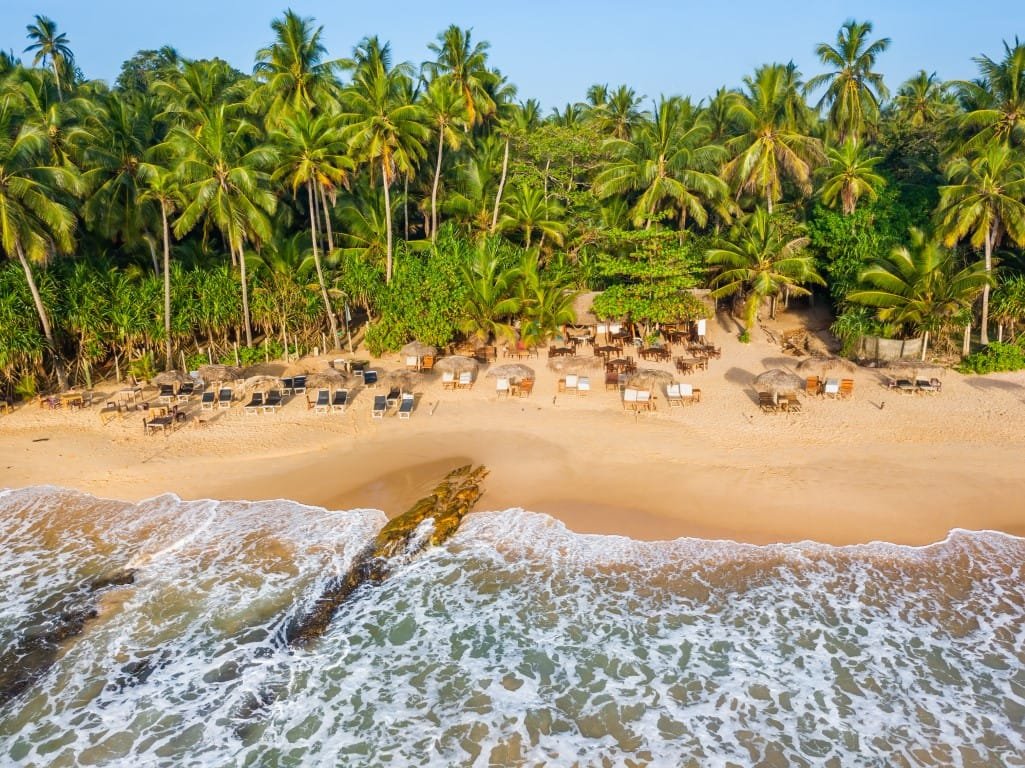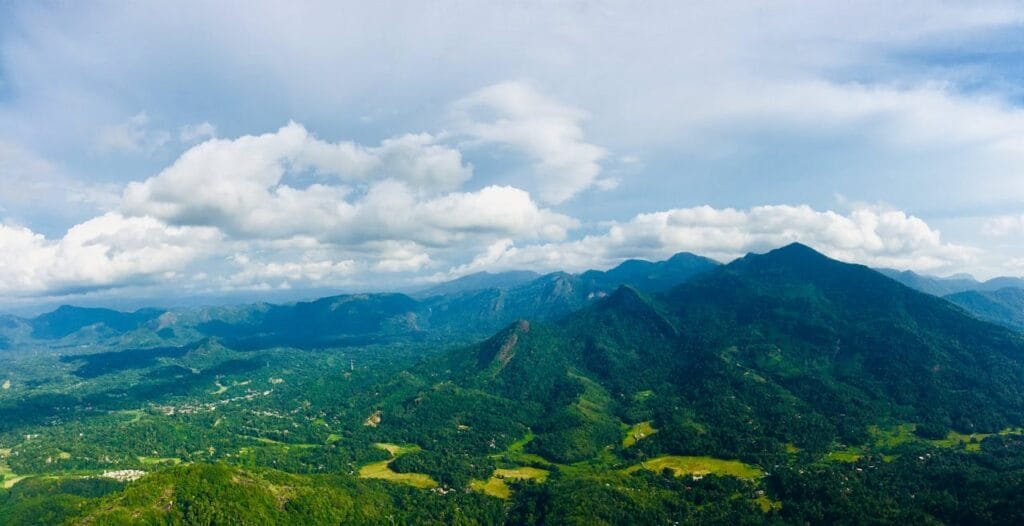Introduction: Understanding Sri Lanka’s Climate and Seasons
Sri Lanka, an island nation in the Indian Ocean, is renowned for its stunning landscapes and rich biodiversity. Understanding its climate is essential if you are looking for the best time to visit Sri Lanka and planning to visit this beautiful country. Sri Lanka experiences a tropical climate characterized by high humidity and temperatures that average between 26°C to 30°C (79°F to 86°F) throughout the year. The island’s geographical location near the equator shapes its warm climate.
A defining feature of Sri Lanka’s weather is its monsoon seasons, which significantly influence the weather patterns across different regions. The southwest monsoon, occurring from May to September, brings heavy rains primarily to the southwestern parts of Sri Lanka, including Colombo and Galle. Conversely, from October to February, the northeast monsoon affects areas such as Trincomalee and Batticaloa with substantial rainfall.

These monsoons create distinct wet and dry zones within Sri Lanka. Due to elevation differences, the central highlands experience cooler temperatures than coastal areas. Understanding these weather patterns in Sri Lanka can help travelers to find out the best time to visit Sri Lanka and plan accordingly, whether they seek sun-soaked beaches or lush green landscapes during their journey through this tropical paradise.
The Dry Season: Perfect Months for Beach Lovers and Outdoor Activities
Sri Lanka’s dry season, spanning from December to March, offers a relaxing time for beach enthusiasts and outdoor adventurers. During these months, the island experiences minimal rainfall and plenty of sunshine, creating perfect conditions for exploring its stunning coastline and engaging in various outdoor activities.
This period is undoubtedly the best time to visit Sri Lanka for those looking to relax in the sun on beautiful beaches. The west and south coasts of Sri Lanka are especially inviting during the dry season, with popular beach destinations like Bentota, Mirissa, and Unawatuna offering crystal-clear waters and soft sandy shores. Whether you’re interested in swimming, snorkeling, or simply lazing by the sea with a good book, these months provide ideal weather conditions.

Beyond the beaches, Sri Lanka’s dry season is also perfect for exploring its rich natural landscapes through activities such as hiking and wildlife safaris. The country’s national parks, like Yala and Udawalawe, are more accessible during this time due to drier trails and roads. Visitors can embark on thrilling safaris to witness elephants roaming freely or spot leopards in their natural habitat.
Travelers planning a trip between December to March should consider booking accommodations early due to high demand during peak tourist season. Additionally, packing essentials such as sunscreen and light clothing will ensure comfort while enjoying all that Sri Lanka offers during its beautiful dry season.
The Monsoon Seasons: Exploring the Island During the Wet Months
The monsoon seasons in Sri Lanka present a unique opportunity for adventurous travelers to explore the island’s lush landscapes and vibrant culture during the wet months. Understanding the island’s two distinct monsoon patterns is essential for planning a memorable trip. The southwest monsoon, known as “Yala,” typically occurs from May to September, affecting the southwestern regions such as Colombo, Galle, and the hill country. Conversely, the northeast monsoon, or “Maha,” spans from October to January, bringing rain to areas like Trincomalee and Batticaloa.

Traveling during these rainy seasons can be rewarding with a bit of preparation. For those venturing out during Yala, consider exploring Sri Lanka’s eastern coast, where sunny weather prevails. Meanwhile, Maha offers an ideal time to visit popular destinations like Kandy and Nuwara Eliya in the central highlands, which experience less rainfall.
To make the most of your rainy season adventure, pack appropriately with waterproof gear and plan indoor activities such as visiting tea plantations or exploring cultural sites that are less crowded during these months. Embrace flexible itineraries to adjust plans according to weather forecasts and enjoy lower travel costs while experiencing Sri Lanka’s enchanting beauty in its most verdant state.
Regional Considerations: Weather Variations Across Different Parts of Sri Lanka
Sri Lanka’s diverse climate is a fascinating aspect for travelers and residents alike, offering a variety of weather experiences across its regions. Understanding these regional climate differences can significantly enhance your travel planning, ensuring you visit the right places at the correct times.

The southern coast of Sri Lanka is renowned for its tropical weather, characterized by warm temperatures and abundant sunshine throughout the year. This region is perfect for beach lovers and those seeking water sports. The best time to visit Sri Lanka’s southern coast is from December to March when the seas are calm and conducive to activities like snorkeling and diving.
In contrast, the central highlands present a cooler climate with lush greenery and mist-covered mountains. Due to its elevation, this area experiences more rainfall, particularly during the monsoon seasons from May to September. The central highlands are ideal for those who enjoy hiking or exploring tea plantations, with January through April being optimal months due to drier conditions.

For those planning their itinerary based on weather conditions, understanding these regional variations can help them choose the best regions to visit based on their preferences. Whether you’re seeking sun-drenched beaches or incredible mountain retreats, Sri Lanka’s varied climates offer something unique for every traveler.
Festivals and Cultural Events: Timing Your Visit with Local Celebrations
Timing your visit to Sri Lanka with local festivals and cultural events can significantly enhance your travel experience, offering a deeper insight into the country’s rich traditions and vibrant community life. Sri Lanka boasts a diverse cultural events calendar, with celebrations that reflect its multi-ethnic society.

One of the most spectacular festivals is the Esala Perahera, held in Kandy during July or August. This grand procession honors the Sacred Tooth Relic of Buddha and features traditional dancers, drummers, and lavishly decorated elephants parading through the streets. The timing of this festival aligns with the full moon in Esala month, making it an unforgettable spectacle for visitors.

Another significant celebration is the Sinhala and Tamil New Year, known locally as Aluth Avurudda or Puthandu. This festival, which takes place in mid-April, marks the end of the harvest season and is celebrated by both Sinhalese Buddhists and Tamil Hindus across Sri Lanka. It involves various customs such as lighting oil lamps, preparing traditional sweets like kavum and kokis, and engaging in family-oriented games.

By planning your trip around these key events on Sri Lanka’s cultural calendar, you not only witness these unique traditions firsthand but also gain an appreciation for the island’s harmonious blend of cultures.
Wildlife Watching Opportunities: Best Times for Safari and Marine Life Encounters
Sri Lanka offers plenty of wildlife-watching opportunities, making it a prime destination for nature enthusiasts. Understanding the best times for various wildlife encounters is crucial to making the most of your visit.

For those interested in a thrilling wildlife safari in Sri Lanka, Yala National Park and Udawalawe National Park are top choices. The ideal time for birdwatching in these parks is from November to April. During this period, the parks are packed with residents and migratory birds, offering spectacular sights and sounds.

If marine life captivates you more, then whale watching should be on your itinerary. The southern coast of Sri Lanka provides excellent whale-watching seasons from November to April, and you can spot blue whales and sperm whales off the coast of Mirissa. Meanwhile, Trincomalee on the east coast offers sightings from May to October.
By planning your visit according to these peak times, you can ensure an unforgettable experience that captures the rich diversity of Sri Lanka’s wildlife. Whether you’re traversing through lush national parks or cruising along its azure waters, each moment promises awe-inspiring encounters with nature’s marvels.
Conclusion: Plan Your Trip to Experience the Best of What Sri Lanka Has to Offer Year-Round
In conclusion, planning a trip to Sri Lanka is an invitation to explore a land of diverse experiences that cater to every traveler’s desires. With its rich combination of culture, history, and natural beauty, this island nation offers something unique in every season, making it easy to find the best time to visit Sri Lanka based on your interests. Whether you’re drawn to the sun-kissed beaches of the south coast or the lush greenery of the central highlands, Sri Lanka promises an unforgettable adventure.
Travelers can immerse themselves in ancient cities like Anuradhapura and Polonnaruwa, where history comes alive through well-preserved ruins and sacred sites. For wildlife enthusiasts, national parks such as Yala and Udawalawe provide thrilling safaris, offering opportunities to witness elephants roaming freely or catch a glimpse of elusive leopards.
Sri Lanka’s vibrant festivals are another highlight you should not miss. Time your visit around events like Vesak or the Kandy Esala Perahera to experience the country’s cultural richness and spiritual fervor firsthand.
With its welcoming hospitality and diverse attractions available throughout the year, Sri Lanka is truly a destination for all types of travelers. So, pack your bags and prepare for an enriching journey filled with discovery and delight in this enchanting island paradise.




